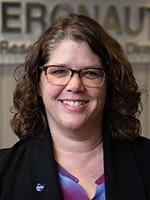NASA Aeronautics: Engaging Creativity and the Future in a Technology-Driven World
,
Colorado Convention Center, Bluebird Ballroom 3AB
Presenters

Session description
Purpose & objective
Purpose: To inspire and educate participants about the future of aeronautics and how their students will play an integral part in the evolution of our airspace, including the democratization of aviation.
Objectives:
* Introduce existing and emerging technology and skill needs in the world of aeronautics
* Develop logic and systems thinking for the classroom that builds a framework for the integration of multiple technologies into the learning progression
* Allow participants to feel empowered to implement and/or adapt real-world content into their learning environment to fit needs.
Outline
1.) Presentation: overview of NASA Aeronautics and overall resources (15 min)
2.) Activity One: presentation and hands-on activity: (15 min) Design Your Own X-Plane
* Presentation of activity materials followed by opportunity to work in small groups to complete the activity. Groups will then briefly share their projects
3.) Activity Two: presentation and hands-on activity: (15 min) Dream with Us Design Challenge
* Presentation of activity materials and design challenge framework followed by an exploration of available activities and an invitation for participants to get student teams involved in the 2024 challenge
4.) Differentiation and assessment discussion (10 min)
* Overall open-ended discussion of differentiation options within the highlighted activities and the variety of ways to assess student learning
5.) Wrap-Up, Q&A (5 min)
Supporting research
Strategies implemented in the development of presented STEM activities, and the discussions within the session include topics and expertise pulled from:
* "Black, Borwn, and Bruised: How Racialized STEM Education Stifles Innovation" by Ebony Omotola McGee (book, Oct. 2020)
*FAA publication, "Urban Air Mobility Concept of Operations" (April 2023)
* White House Interagency Roadmap to Support Space-Related STEM Education (Sept 2022)
* "Equity-Oriented Conceptual Framework for K-12 STEM Literacy" by C. Jackson et al. (2021)
Session specifications
Laptop: Chromebook, Mac, PC
Tablet: Android, iOS, Windows
Facilitator
- Manage the use of technology and student learning strategies in digital platforms, virtual environments, hands-on makerspaces or in the field.
- Create learning opportunities that challenge students to use a design process and computational thinking to innovate and solve problems.
 Return
Return Participate and share: Interactive session
Participate and share: Interactive session  Trips and Tours
Trips and Tours Streaming Session
Streaming Session Recorded Session
Recorded Session